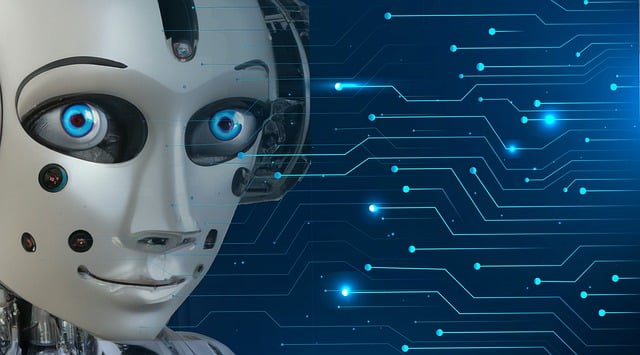AI chatbots, such as OpenAI ChatGPT and Bing AI, are increasingly popular for their ability to instantly answer queries and offer automated customer services. But understanding how all this happens is very crucial.

Whether it’s a free AI chatbot or a more advanced AI bot, the technology is evolving rapidly. Chatbots like AI Chat GPT and Character AI chatbot are capable of sophisticated interactions, learning from users to improve responses.
From casual conversations to complex problem-solving, chatbots serve diverse needs. Many platforms offer AI chat free of charge, allowing users to talk to AI with ease. In this article, we will explore different types of chatbot AI, their uses, pros and cons, and interesting facts about this growing technology.
What is a Chatbot?
A chatbot is a software or computer program designed to simulate conversation with human users, typically through textual or auditory means and often powered by artificial intelligence (AI).
These intelligent agents are programmed to understand and respond to natural language input, allowing users to interact with them and learn over time in a conversational manner.
Chatbots can be integrated into various platforms, including websites, messaging applications, and social media channels, serving different purposes ranging from customer service and information storage to entertainment and personal assistance.
Types of chatbots
- Rule-based Chatbots: These operate on predefined rules and decision steps. They follow a set of programmed instructions to respond to user queries and can handle simple interactions efficiently.
- AI-powered Chatbots: These use advanced technologies such as natural language understanding (NLU) and machine learning to interpret user input, learn from interactions, and provide more personalized responses.
- Virtual assistants: These are sophisticated chatbots equipped with AI capabilities to perform tasks, answer questions, and execute commands. They integrate with various devices and services, offering users personalized assistance in their daily lives.
- Transactional Chatbots: They facilitate transactions and business operations through conversational interfaces. They can handle tasks like booking appointments, making reservations, and processing orders.
- Social Media Chatbots: These operate within messaging platforms like Facebook Messenger, or WhatsApp, enabling businesses to engage with customers, automate responses, and enhance social media marketing.
Examples of Chatbots
- Customer service Chatbots: Businesses like banks utilize chatbots to assist customers with account inquiries, product information, and troubleshooting. These chatbots offer immediate support, reducing wait times and improving customer satisfaction.
- E-commerce Chatbots: Online retailers use chatbots to enhance the shopping experience by recommending products, answering questions, and facilitating purchases.
- Healthcare Chatbots: Health insititutions use chatbots to provide medical advice, schedule appointments, and offer health support. They also assists users in assessing symptoms and accessing healthcare services remotely.
- Educational Chatbots: Educational institutions use chatbots to deliver personalized learning experiences, answer student queries, and provide academic assistance
- Entertainment Chatbots: Entertainment companies develop chatbots to entertain users with interactive stories, games, and other entertaining features.
Follow Nekius
visit Nekius Shop
nekius
Uses of Chatbots
- Provide customer support: Chatbots streamline customer support operations by providing instant assistance, resolving common queries, and escalating complex issues to human agents when necessary.
- Enhance lead generation: Chatbots engage website visitors, qualify leads, and gather customer information through interactive conversations, facilitating lead generation and marketing campaigns.
- E-commerce and sales marketing: Chatbots enhance the shopping experience by offering personalized product recommendations, assisting with purchases, and providing order status updates, driving sales and customer loyalty.
- Give instant information: Chatbots deliver relevant information and resources to users on-demand, ranging from weather forecasts and news updates to educational content and frequently asked questions (FAQs).
- Help in workflow automation: Chatbots automate routine tasks and workflows, such as appointment scheduling, form filling, and data entry, increasing efficiency and productivity.
Advantages of Chatbots
- Chatbots provide 24/7 available assistance, ensuring that users can access information and support at any time, regardless of their location or time zone.
- Chatbots can handle multiple conversations simultaneously, scaling to accommodate growing user demand without the need for additional resources.
- Chatbots reduce operational costs by automating repetitive tasks, minimizing the need for human intervention, and optimizing resource utilization.
- Chatbots offer personalized interactions, quick response times, and seamless communication, enhancing user experience, satisfaction, and engagement.
- Chatbots generate and store valuable data and analytics on user interactions, preferences, and behavior, enabling businesses to gain actionable insights and improve decision-making.
Disadvantages of Chatbots
- Chatbots may struggle to understand complex queries, understand inappropriate language, or accurately interpret user queries, leading to miscommunication and frustration.
- Chatbots lack human empathy and emotional intelligence, making it challenging to address sensitive issues or provide empathetic support in certain situations.
- Chatbots rely on technology infrastructure and internet connectivity, making them susceptible to technical glitches, downtime, and cybersecurity threats.
- Chatbots collect and process user data, raising concerns about privacy, data security, and compliance with regulations such as GDPR and CCPA.
- Overreliance on chatbots may result in reduced human interaction, diminished problem-solving skills, and a loss of personal touch in customer relationships.
Facts About Chatbots
- The global chatbot market is projected to reach over $1 billion by 2025, driven by increasing adoption across industries and advances in AI technology.
- Messaging apps like WhatsApp, Facebook Messenger, and WeChat host over 300,000 chatbots, catering to billions of users worldwide which clarifies their popularity.
- Chatbots are becoming increasingly used at simulating human-like conversations, with some achieving indistinguishable levels of fluency and naturalness.
- Many chatbots support multiple languages and dialects, enabling cross-cultural communication and accessibility for diverse user demographics.
- Various industries, including finance, healthcare, retail, and hospitality, are embracing chatbots to ease their operations, enhance customer experiences, and drive innovation.
Chatbots have completely changed the way we engage with technology by providing immediate help, streamlining processes, and improving user experiences in a variety of industries.
![How To Make Money With ChatGPT [A Comprehensive Guide]](https://nekius.com/wp-content/uploads/2024/03/growtika-f0JGorLOkw0-unsplash.jpg)
